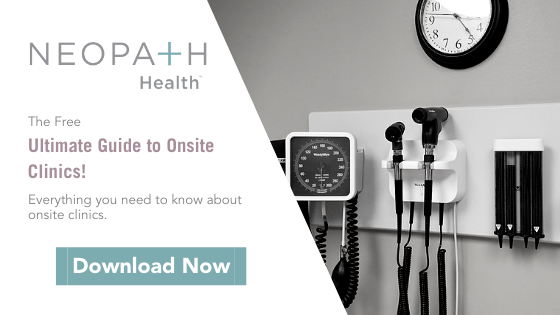There are many compelling reasons an organization might decide to implement an onsite clinic. Most do it to gain a little control over health costs for both the company and the employees, some do it to increase employee productivity or overall wellness. No matter what the reasoning, it's extremely important to go into the process knowing your goals and the outcomes you'd like to eventually attain, then setting up systems to measure and track those goals over time.
According to a 2014 study from the National Association of Worksite Health Centers (NAWHC), "Unfortunately, a third of the respondents [in the study] don’t know or measure the value of their clinic, which is a necessary component for reporting, obtaining increased resources and identifying areas for improvement and promotion."
We're going to help you put together a few of the important metrics you should be keeping an eye on during the first several weeks, months, and years of your clinic's operation. Here are the must-have clinic reporting capabilities.
Financial
Financials are obviously one of the most important items to track as you want to make sure you've made the right decision for your business and will realize ROI as quickly as possible. Some things you should keep a close eye on:
Download our free Budget Builder Worksheet to estimate your costs.
-
Medical cost reduction over time - are you saving money by providing services directly to your employees versus the traditional method of providing health benefits and allowing them to choose their own providers?

-
Some of the reasons you should see savings here are a reduction in employees visiting emergency rooms or urgent care facilities, reduction in the number of hospital admissions, and less reliance on specialists.
-
Also, if you provide an onsite pharmacy, you should see a reduction in the overall cost of pharmaceuticals because you'll have more control over suppliers and pricing.
Utilization
The utilization category helps you measure whether or not your employees are actually using the facilities and services you are providing. You should look at each resource individually. So, if you offer a fitness facility, and also have an onsite clinic that provides primary care, acute/urgent care, and physical therapy plus you also have an onsite pharmacy, each of these segments should be tracked individually. Pulled together all stats to give you a big-picture of overall utilization. This allows you to see where you may want to focus more effort either to increase awareness or to double down on things that your employees are finding extremely useful. In addition, you can see where you should rethink or perhaps get rid of a specific underutilized offering.
Another thing you should be sure to track within this category is who is using each of the services. You should break down all of the potential eligible patients into categories and keep track of their utilization. Categories might include employees, adult dependents, children, retirees, COBRA recipients, and employees from a partner company to use the services. You should keep track of who from each category is utilizing what and how often.
Health/Wellness
An increase in employee health or wellness doesn't necessarily mean less visits to the clinic, it can actually mean more regular visits and increased preventative care. One stat you could look at here is a reduction in PTO due to illness.

Another element you could track within this category is the overall attitude of your employees toward their health and wellness. If you offer onsite services, you advertise those services, and you have your upper management openly utilizing the services, you should start to see a culture of caring about health expanding throughout the company. You can measure this through employee surveys or an uptick in employees utilizing wellness-specific services like a fitness center or smoking cessation programs.
Satisfaction
Your employee's satisfaction with the services you offer will weigh greatly on the impact potential of your cost savings and overall utilization. Satisfaction should be measured categorically, by facility, by service, and by provider. Just as you track utilization separately for each possible component, you'll want to also measure satisfaction by each individual component to understand if you might need to replace a provider that is having trouble engaging or expand a specific service that people are finding extremely beneficial.
Productivity
There are two segments of productivity to audit:
-
Employee productivity - you should see an increase in productivity correlated with a reduction in absenteeism due to employees no longer needing to take time off to visit medical providers.
-
Medical staff productivity - you'll want to compare your utilization statistics to the hours that you have each of your providers putting in. This will allow you to ensure you are scheduling providers for the correct amount of hours according to demand for their service.
Conclusion
If you feel like this all sounds like a bit too much to do alongside your actual day job, you could look into hiring a clinic vendor to help you manage and track it all. According to the NAWHC study, "About 58% of employers who have an onsite/near-site clinic indicated that they use a third-party onsite clinic vendor." You don't have to go it alone!
.png?width=433&name=NeoPath_2019_logo_2color%20(1).png)





